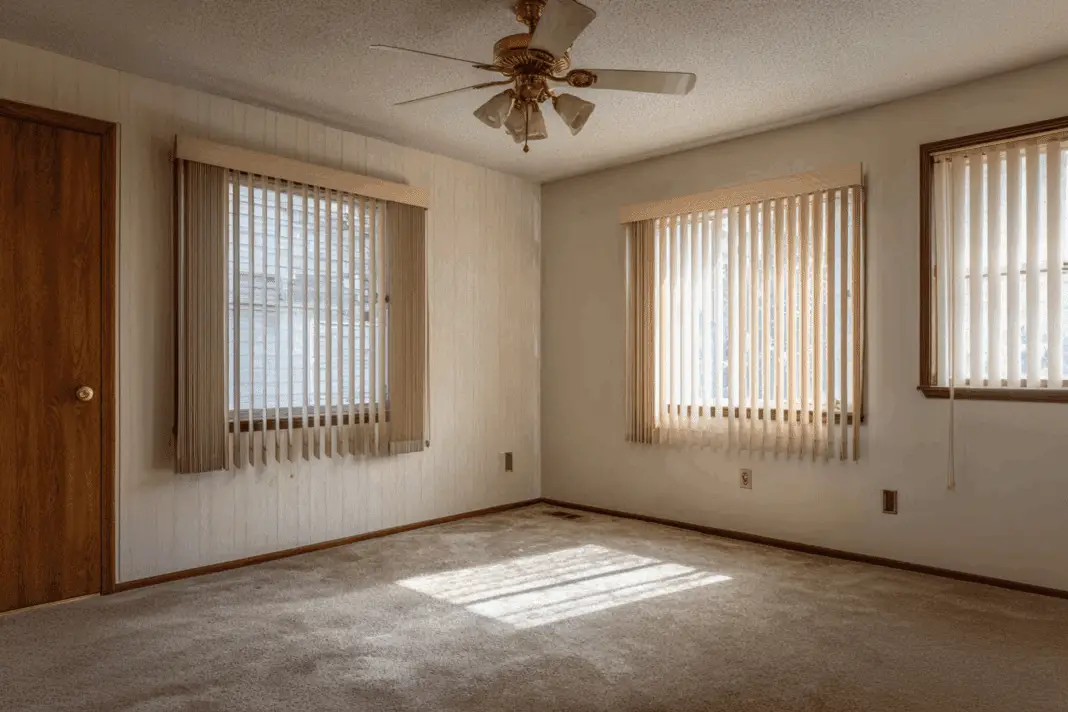Walking into a home shouldn’t feel like stepping back in time, yet millions of homeowners are unknowingly living in spaces that broadcast “1990s called and want their decor back.” From yellow electrical outlets to popcorn ceilings, certain features instantly date a home and can slash thousands from its value. The good news? Most of these outdated elements can be fixed without breaking the bank or hiring a contractor. Ready to transform your space from vintage nightmare to modern dream?
Yellow outlets and switches scream rental property
Nothing says “this house hasn’t been touched since 1985” quite like yellowed electrical outlets and light switches. These dingy, discolored fixtures instantly make any room feel dated and neglected, regardless of how well-maintained everything else appears. The yellowing happens over time due to heat exposure and age, but the impact on your home’s appearance is immediate and dramatic. Guests notice these details within seconds of entering a room.
Replacing outlets and switches is surprisingly affordable and makes an instant difference. Fresh white outlets can completely transform a space for under $50 per room. If you’re not comfortable with electrical work, many hardware stores sell paintable outlet covers that slip right over existing ones. This simple update creates a clean, modern look that makes the entire room feel refreshed and well-maintained.
Popcorn ceilings are the ultimate style killer
Popcorn ceilings might have been trendy in the 1970s, but today they’re about as fashionable as bell-bottom jeans at a board meeting. This textured ceiling treatment collects dust, makes rooms feel smaller, and instantly dates any space. The bumpy surface catches light awkwardly, creating shadows that make rooms appear dingy and cramped. Modern buyers specifically avoid homes with popcorn ceilings because they know the removal process can be messy and expensive.
Removing popcorn texture and painting ceilings smooth creates an immediate modern upgrade. The process involves scraping off the texture, smoothing the surface, and applying fresh paint. Painting ceilings in crisp white makes rooms feel taller and brighter instantly. While removal can be time-consuming, the transformation is dramatic and adds significant value to your home. Professional removal typically costs between $1,000-$3,000 per room, but the investment pays off in both aesthetics and resale value.
Brass fixtures announce your home is stuck in time
Brass door handles, cabinet hardware, and light fixtures were once considered luxurious, but now they scream “time capsule” louder than a vintage bell-bottom collection. The warm golden finish that once felt elegant now appears dated and heavy, making spaces feel dark and closed-in. Brass hardware particularly stands out against modern paint colors and contemporary furnishings, creating an jarring contrast that highlights the age of your home’s features.
Updating to brushed nickel, matte black, or chrome hardware creates an instant modern transformation. Cabinet hardware changes alone can make kitchen cabinets look completely new. Door handles throughout the house can be swapped out in a single afternoon for under $200. Light fixtures with brass finishes should be replaced or spray-painted with metallic paint designed for fixtures. The consistency of updated hardware throughout your home creates a cohesive, modern feel that buyers love.
Fluorescent lighting makes everything look terrible
Those humming, flickering fluorescent lights don’t just make people look sick – they make entire rooms feel like hospital cafeterias or office break rooms. The harsh, yellowish light is unflattering to both people and spaces, creating an institutional atmosphere that kills any cozy home vibe. Fluorescent bulbs also tend to flicker as they age, creating an annoying strobe effect that can trigger headaches and make rooms feel uncomfortable.
Switching to LED bulbs in daylight temperature transforms room ambiance immediately. Natural daylight bulbs create clean, bright light that makes colors pop and spaces feel fresh. LED bulbs last longer, use less energy, and produce better quality light than fluorescent options. For rooms with fluorescent fixtures, consider replacing the entire fixture with modern alternatives. Track lighting, pendant lights, or recessed LED fixtures provide better illumination and instantly modernize any space.
Vertical blinds belong in 1990s office buildings
Vertical blinds might be practical for sliding doors, but they’re also a dead giveaway that your home’s style peaked during the Clinton administration. These clunky window treatments collect dust, break easily, and create harsh lines that make windows look institutional rather than welcoming. The plastic slats often become brittle over time, leading to broken pieces that dangle awkwardly or fall off completely. Nothing says “rental property” quite like vertical blinds with missing slats.
Modern window treatments like cellular shades, plantation shutters, or flowing curtains create a softer, more elegant look. Cellular shades provide excellent insulation while maintaining clean lines, while plantation shutters add architectural interest and value. For sliding doors, consider panel track blinds or curtain panels that slide on tracks. These alternatives offer the same light control and privacy as vertical blinds but with a contemporary aesthetic that complements modern decor and increases home appeal.
Wall to wall carpeting screams maintenance nightmare
Wall-to-wall carpeting in every room was once considered luxurious, but now it feels outdated and impractical. Carpet traps odors, stains easily, and requires constant maintenance to look decent. Potential buyers worry about what might be lurking beneath – pet accidents, spills, or wear patterns that can’t be cleaned. The typical lifespan of carpet is only 10-15 years, meaning most existing installations are already past their prime and ready for replacement.
Luxury vinyl planks or hardwood floors create a modern, low-maintenance alternative that buyers prefer. LVP flooring like Pergo Outlast provides durability and style at a fraction of hardwood costs. Many homes built in the 1980s and earlier have hardwood floors hidden beneath carpet – removing carpet might reveal beautiful original floors that just need refinishing. Area rugs can define spaces and add warmth without the maintenance headaches of wall-to-wall carpet.
Builder grade everything lacks personality completely
Builder-grade fixtures, hardware, and finishes might be functional, but they’re also completely forgettable. These basic elements – from hollow-core doors to standard faucets to basic light fixtures – create a generic, apartment-like feel that lacks character or charm. Builder-grade materials are chosen for cost, not aesthetics, resulting in spaces that feel temporary rather than like a real home. The beige-on-beige color scheme that often accompanies these features makes everything blend together in the most boring way possible.
Strategic upgrades to key elements create personality without massive renovation costs. Replacing hollow doors with solid-core options, upgrading faucets and light fixtures, and adding cabinet hardware transforms basic spaces into custom-feeling homes. Crown molding, chair rails, or wainscoting add architectural interest to plain walls. Even painting interior doors in bold colors like Tricorn Black creates dramatic impact. These upgrades don’t require permits or major construction but deliver significant visual improvements.
Outdated kitchen cabinets dominate every room tour
Those honey oak cabinets from the 1990s might be solid wood, but they’re also broadcasting your kitchen’s age to everyone who enters. The warm, orangey tone that once felt cozy now appears dated against modern paint colors and stainless steel appliances. Cathedral-style doors with their raised centers and decorative edges particularly scream “1990s subdivision” and can make even updated countertops and backsplashes look cheap by comparison.
Cabinet painting transforms kitchens more dramatically than any other single upgrade. Painting kitchen cabinets requires patience and proper preparation, but the results are worth the effort. White or light gray cabinets create a fresh, modern look that works with any decor style. Professional cabinet painting services typically cost $3,000-$8,000 compared to $15,000-$30,000 for cabinet replacement. Adding new hardware and updating hinges completes the transformation, creating a kitchen that looks completely renovated for a fraction of the replacement cost.
Outdated bathroom fixtures kill any spa dreams
Nothing destroys bathroom ambiance quite like that almond-colored toilet, matching sink, and harvest gold faucets from decades past. These colored fixtures were trendy once, but now they make bathrooms feel like museum exhibits of questionable design choices. The worst part? Buyers remember these features long after viewing your home. Distinctive outdated bathrooms become the defining characteristic of your entire house, overshadowing any positive features.
Painting bathroom vanities and updating faucets creates immediate improvement without plumbing changes. Toilet replacement is relatively simple and inexpensive, while vanity painting with quality cabinet paint transforms the entire space. Brushed nickel or matte black faucets replace brass fixtures for instant modernization. New mirrors, lighting, and accessories complete the transformation. These updates typically cost under $2,000 but can add thousands in perceived value and eliminate the biggest turnoff in home showings.
Transforming an outdated home doesn’t require winning the lottery or hiring an entire construction crew. These simple updates – from swapping yellow outlets to painting tired cabinets – can modernize your space and boost its value significantly. The best part? Most of these changes can be completed over weekends and cost less than a single month’s mortgage payment. Your home should feel current and welcoming, not like a time capsule from decades past.

